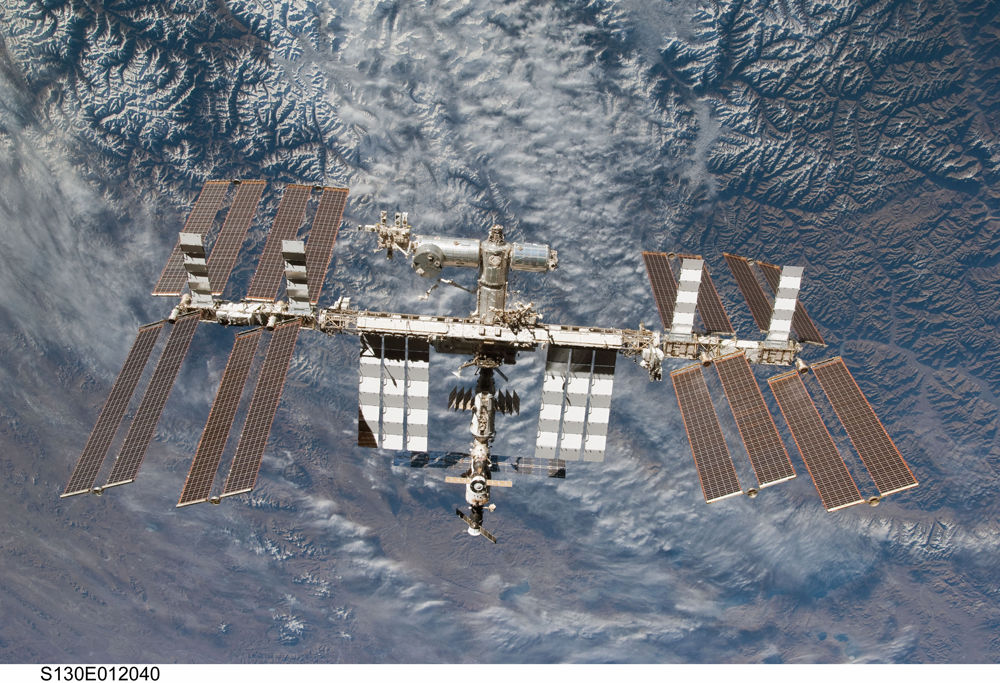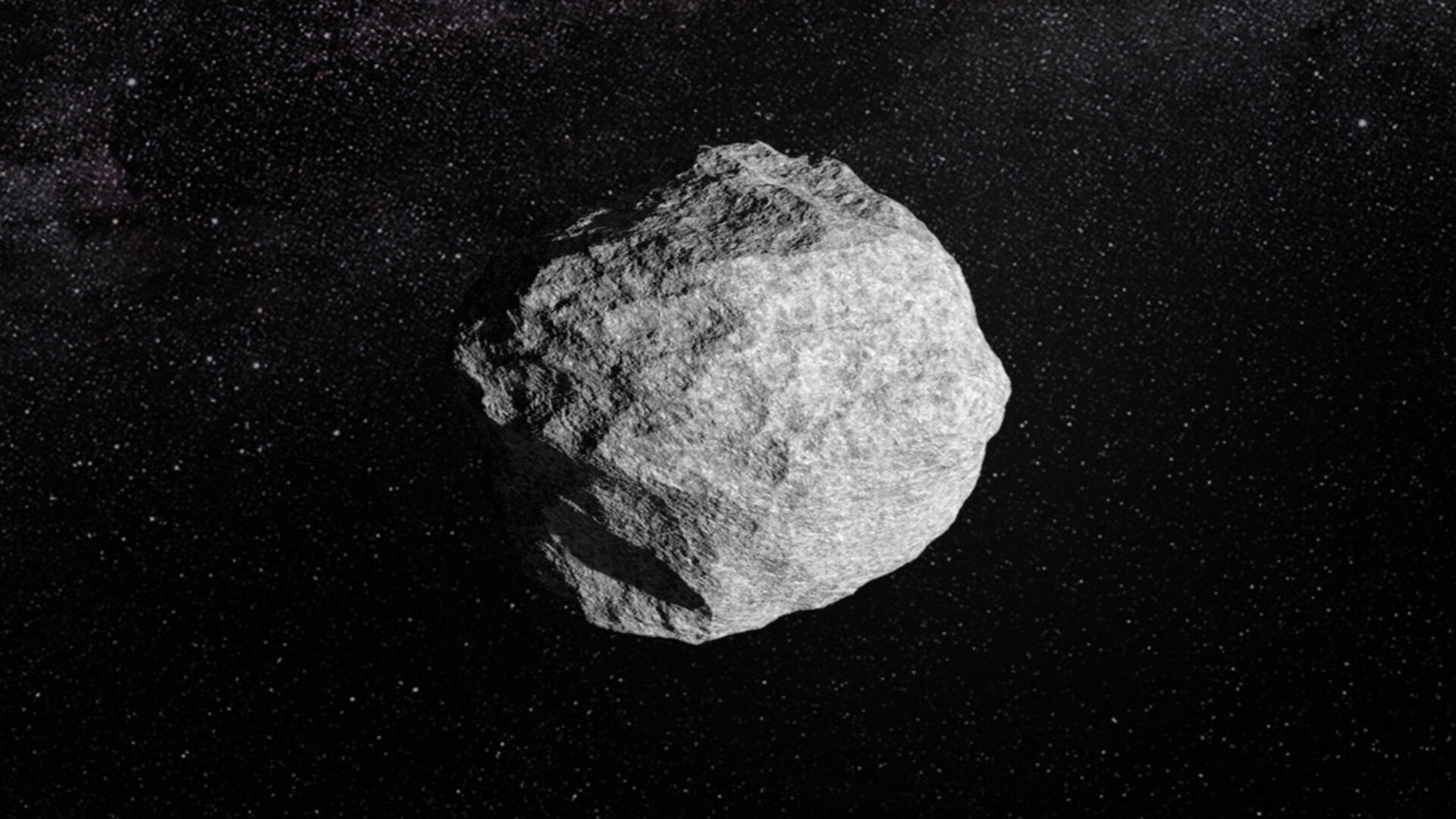Space Junk Threat Forces Space Station Crew to Take Shelter

A piece of space junk from a Chinese anti-satellite test will fly uncomfortably close to the International Space Station today, forcing the outpost's crew to take shelter in a Russian lifeboat as a safety measure, NASA officials said.
The threatening space debris will zoom within 2.7 miles (4.5 kilometers) when it makes its closest approach at about 4:21 p.m. EDT (2021 GMT) today, NASA spokesman Josh Byerly told SPACE.com from the agency's Johnson Space Center in Houston.
The station's three-person crew includes NASA astronaut Cady Colman, Italian astronaut Paolo Nespoli and Russian cosmonaut Dmitry Kondratyev, who is commanding the mission. The astronauts and cosmonaut will close hatches between modules of the station's U.S. segment, and take shelter in their Soyuz TMA-20 spacecraft, which can double as a lifeboat in case the debris actually strikes the space station and forces the crew to flee.
NASA is keeping a close eye on the space debris to make sure it passes by the space station without incident.
The space debris is a piece of China's defunct weather satellite Fengyun-1C, which was destroyed during a Chinese anti-satellite test in 2007 that created a vast cloud of orbital debris, NASA officials said. [Worst Space Debris Moments of All Time]
NASA and its space station partners usually move the space station clear of any potentially threatening orbital debris if tracking observations predict the space trash will fly within a preset safety perimeter. That perimeter, which is shaped like a pizza box, extends just over 15 miles (25 km) around the space station and about a half-mile (0.75 km) above and below the orbiting lab.
But the process of moving the space station using its Russian-built thrusters or by firing the engines on other spacecraft docked at the outpost takes time. The close pass of the Chinese satellite debris was discovered too late to make any maneuvers. [Video: Space Junk Threat Grows]
Breaking space news, the latest updates on rocket launches, skywatching events and more!
"They need more than just a few hours," Byerly said.
Today's space debris threat comes on the heels of another close call at the space station. That event occurred on Friday (April 1) at 10:36 p.m. EDT (0236 Saturday GMT), when space station flight controllers moved the orbiting laboratory clear of another piece of satellite trash.
The Friday space debris event was spotted with much more advance notice than today's threat, allowing flight controllers time to move the space station using thrusters on a European cargo ship currently docked to the orbiting lab, as well as engines on a docked Russian cargo ship and the station's own thrusters.
The move, called a debris avoidance maneuver, pushed the space station clear of a leftover piece of space junk from a 2009 crash between two satellites.
"The object [was] a relic from a collision between the COSMOS 2251 and Iridium 33 satellites in February 2009 and had been close to the station’s orbit prior to the debris avoidance maneuver," NASA officials said in a statement discussing the Friday space debris event.
Space debris has been a growing threat to satellites and spacecraft carrying astronauts because of the anti-satellite test, 2009 crash and increasing number of satellites in orbit. Today, more than 22,000 pieces of space junk are being tracked in Earth orbit. Some military officials have proposed forming an international response to meet the space debris threat.
NASA officials, however, said that the close timing of the two debris events at the station over the last week is part of human spaceflight.
"It's just coincidence," Byerly said. "The other earlier one, we found out with enough warning to move the space station."
While the three crewmembers on the space station wait out the space debris flyby, another crew is also nearing the orbiting lab.
A Russian Soyuz spacecraft carrying a NASA astronaut and two cosmonauts is closing in on the International Space Station after launching into orbit on Monday. The Soyuz TMA-21 spacecraft is carrying the second half of the station's Expedition 27 mission crew. It will dock at the space station on Wednesday afternoon.
You can follow SPACE.com Managing Editor Tariq Malik on Twitter @tariqjmalik. Follow SPACE.com for the latest in space science and exploration news on Twitter @Spacedotcomand on Facebook.
Join our Space Forums to keep talking space on the latest missions, night sky and more! And if you have a news tip, correction or comment, let us know at: community@space.com.

Tariq is the award-winning Editor-in-Chief of Space.com and joined the team in 2001. He covers human spaceflight, as well as skywatching and entertainment. He became Space.com's Editor-in-Chief in 2019. Before joining Space.com, Tariq was a staff reporter for The Los Angeles Times covering education and city beats in La Habra, Fullerton and Huntington Beach. He's a recipient of the 2022 Harry Kolcum Award for excellence in space reporting and the 2025 Space Pioneer Award from the National Space Society. He is an Eagle Scout and Space Camp alum with journalism degrees from the USC and NYU. You can find Tariq at Space.com and as the co-host to the This Week In Space podcast on the TWiT network. To see his latest project, you can follow Tariq on Twitter @tariqjmalik.
